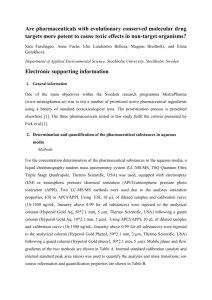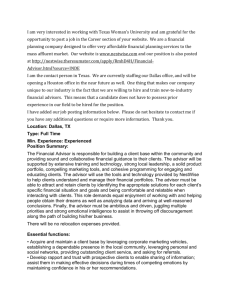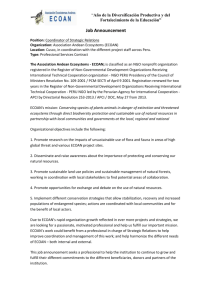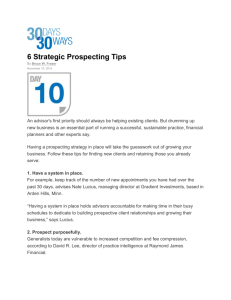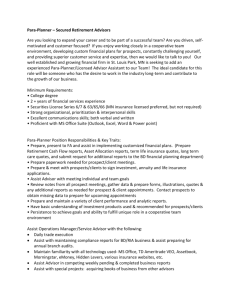Redi is a project managed by 5 partners active in the field of design
advertisement
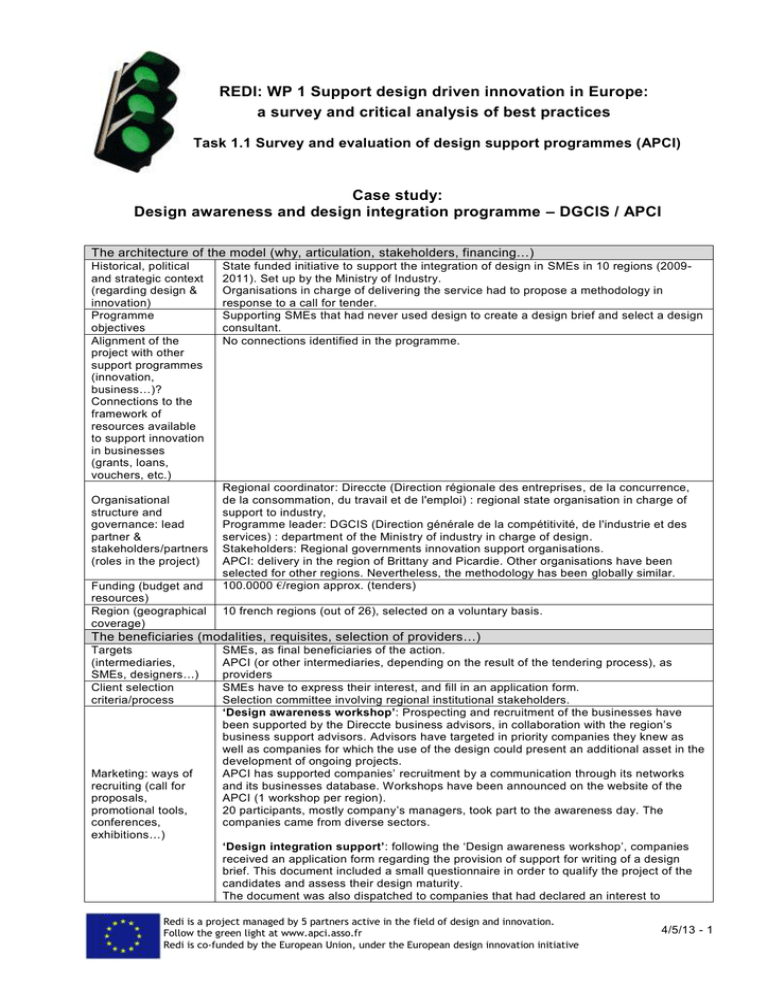
REDI: WP 1 Support design driven innovation in Europe: a survey and critical analysis of best practices Task 1.1 Survey and evaluation of design support programmes (APCI) Case study: Design awareness and design integration programme – DGCIS / APCI The architecture of the model (why, articulation, stakeholders, financing…) Historical, political and strategic context (regarding design & innovation) Programme objectives Alignment of the project with other support programmes (innovation, business…)? Connections to the framework of resources available to support innovation in businesses (grants, loans, vouchers, etc.) Organisational structure and governance: lead partner & stakeholders/partners (roles in the project) Funding (budget and resources) Region (geographical coverage) State funded initiative to support the integration of design in SMEs in 10 regions (20092011). Set up by the Ministry of Industry. Organisations in charge of delivering the service had to propose a methodology in response to a call for tender. Supporting SMEs that had never used design to create a design brief and select a design consultant. No connections identified in the programme. Regional coordinator: Direccte (Direction régionale des entreprises, de la concurrence, de la consommation, du travail et de l'emploi) : regional state organisation in charge of support to industry, Programme leader: DGCIS (Direction générale de la compétitivité, de l'industrie et des services) : department of the Ministry of industry in charge of design. Stakeholders: Regional governments innovation support organisations. APCI: delivery in the region of Brittany and Picardie. Other organisations have been selected for other regions. Nevertheless, the methodology has been globally similar. 100.0000 €/region approx. (tenders) 10 french regions (out of 26), selected on a voluntary basis. The beneficiaries (modalities, requisites, selection of providers…) Targets (intermediaries, SMEs, designers…) Client selection criteria/process Marketing: ways of recruiting (call for proposals, promotional tools, conferences, exhibitions…) SMEs, as final beneficiaries of the action. APCI (or other intermediaries, depending on the result of the tendering process), as providers SMEs have to express their interest, and fill in an application form. Selection committee involving regional institutional stakeholders. ‘Design awareness workshop’: Prospecting and recruitment of the businesses have been supported by the Direccte business advisors, in collaboration with the region’s business support advisors. Advisors have targeted in priority companies they knew as well as companies for which the use of the design could present an additional asset in the development of ongoing projects. APCI has supported companies’ recruitment by a communication through its networks and its businesses database. Workshops have been announced on the website of the APCI (1 workshop per region). 20 participants, mostly company’s managers, took part to the awareness day. The companies came from diverse sectors. ‘Design integration support’: following the ‘Design awareness workshop’, companies received an application form regarding the provision of support for writing of a design brief. This document included a small questionnaire in order to qualify the project of the candidates and assess their design maturity. The document was also dispatched to companies that had declared an interest to Redi is a project managed by 5 partners active in the field of design and innovation. Follow the green light at www.apci.asso.fr Redi is co-funded by the European Union, under the European design innovation initiative 4/5/13 - 1 Cost and commitment for the participant participate in the ‘Design awareness workshop’ but who were unable to attend. A ‘business innovation diagnosis’ has also been proposed to companies using the ‘Improve’ questionnaire. Despite the interest shown some companies, the questionnaire was not used, as the innovation process of the SMEs was not structured enough to answer most questions. A selection committee bringing together the different stakeholders (APCI, Direccte, Oséo, INPI) selected the companies. To drive its choice, the committee relied on the documents presented by the company, and the knowledge of the company by the local advisors. 6 companies per region were selected. Average estimated cost: 8,000 € per company, fully supported by the DGCIS. Companies attending the ‘design awareness workshop’ had to pay 30€ (covers lunch and coffee). No binding commitment to run the design project right after the diagnostic and the consultant’s selection was required. The methodology and service overview (collective, sectorial, individual; tools, processes, diagnostic, matchmaking, workshops, mentoring, trainings…; levels, steps): objective, content, target group, number of participants, time frame, cost, etc. Presentation Programme team External competencies taking part to the project development ‘Design awareness workshop’: this one day session is split in two parts. The morning illustrates the various roles of design in business, and includes testimonials from companies and designers. The afternoon session gathers the audience in small groups, with insights about the writing of a design brief. The session has no specific focus, neither in terms of sector, nor in terms of design activity (product, graphic, packaging, branding etc.). A consultant matched to the business by the APCI project manager delivers the ‘design integration support’. APCI monitors, through interviews and short questionnaires, the progress and satisfaction of both parties. APCI’s project manager attends also the audit presentation meeting, as well as the design consultants’ interviews. APCI project manager for the organisation, external advisors (senior designers or design managers) for the individual support to the businesses. APCI has chosen to mandate a group of advisors in design and design management. This choice was motivated by two reasons: - The need to mobilize design skills adapted to a plurality of projects and issues, to respond to the needs of the business a structured approach to the use of the different design fields (product, branding, graphics, etc.) - The need to mobilize professionals whose experience and track record allows them to broaden the company’s immediate request. Experience shows that it is important to properly situate design within the competences already available in the company (technical, managerial, marketing). Matching is operated based on the background of the consultant on one hand and the project and context of the company on the other hand. The ‘design integration support’ was structured as follows: Analysis and diagnosis (this frame was contextualised by the advisor): Step 1: Knowledge of the company, of its resources and its know-how. Observation of existing products, manufacturing and industrial processes. Step 2: Knowledge of the fundamentals of the brand (identity, message, value). Collection of information on the market, customers and competition. Step 3: Analysis of the needs of the company in connection with the intended design project. Step 4: Definition of the design project team. Step 5: Validation of the design brief. Process Launch of the design project Step 6: Create a shortlist of design consultants. Step 7: Launch of a closed call for tenders. Step 8: Assistance in the interviews with the design consultants. Step 9: Assistance in the review of applications. Step 10: Follow-up post operation (negotiations, contractual issues, grants...). The analysis Companies had all provided a presentation of their initial project, but the first interview often revealed weaknesses: - at the marketing level (for example: lack of insights on the market and competition); 4/5/13 - 2 - at the organizational level and the management of the design/innovation process (weaknesses at the level of the competences interfaces); - at the commercial level (gaps in the process of launching new products). Regarding these points, advisors aimed to assess the company’s technical, human and financial capacities as well as to identify its potential and needs. The methodology implemented to gather information is based on: - Interviews with the manager as well as a number of actors (management, marketing, sales, research department); - Working groups and brainstorming sessions on specific thematics; - Observation and inventory of the industrial equipment; - Visit of points of sale; - In-situ observation of the products. This analytical work conducted in cooperation with companies is laying the foundations of a design strategy and must motivate companies to introduce design in the development of future projects. The diagnosis At the end of the audit, the synthesis of information allowed: - to reveal the strengths and weaknesses; to assess the risks and opportunities of the company; - to (re-)qualify the needs; - to express objectives in line with the strategy and the company's values. This audit was presented to senior management for discussion and approval. By validating a strategic framework, consultants and businesses have recast the initial design project in a global perspective of the development of the activity. Formalization of the design process: the design brief As a result of the reframing of the project, recommendations regarding the design project were formalised in the design brief structured into three sections: - the company and its operational context; - the project; - the deliverables expected and the capacities of the design consultancy. The design brief has been developed using either of two approaches, depending on each business-advisor relation: - directive approach The advisor collects and synthesizes the information and develops the brief. The company is asked to provide supportive material. The advisor drafts the brief and gets it validated by the senior managers; - a collaborative approach The advisor provides a contextualised template to the project manager(s) in the company. The company will fill it in and submit it to the advisor. Through a couple of iterations, the brief is developed and approved. Companies must be able to use this document: - as a repository in their strategic thinking and make it evolve in the context of new developments; - as a model for the development of other design briefs. It is worth noting that if the design briefs did respond to the companies’ expectations, participants mentioned their uncertainties about their ability to draw up this kind of documents. Selecting a design consultancy Advisors and APCI shortlisted on average 5 design consultants that could respond to each brief. A special attention was given to the identification of regional designers. In addition to the network of APCI, partners in the region have been asked to help identifying designers and agencies. On average, a list of 3/4 designers has been approved by the company and invited to 4/5/13 - 3 make an offer. This closed call for proposals was chosen because: - it reduces the number of applications to examine and ensures fair treatment in a limited timeframe; - it ensures responses with a higher quality, as applicants have a significant possibility to win the contract. Interviews with designers were conducted with the help of the advisor. A designers’ evaluation grid was delivered to the company to guide it in its choice. The review of applications was conducted with the advisor and APCI’s project manager. The role of the advisor is the one of a facilitator, so that company managers discuss the different presentations, before reaching their decision. To choose a designer, his professional competence, his experience and the relevance of his response are benchmarks for the company. However, the clarity of the presentation (both written and oral), the readability of the offer but also the quality of liste ning and the ability of the designer to capture the latent expectations of the company are all elements that count in the decision. Duration of the programme 1 year per region. After the programme… Concluding workshops have been organised : one per region, and one, at a national level, after the two years. A new pilot programme will run in 2013, targeting specifically businesses in innovation clusters. Other tools The implementation and the deployment of the programme Duration of the project Phases of the programme Sustainability of the project (next steps) Transferability of the programme (regional, national, European) Intellectual property issues (open source /tools, processes, methods) Conception of closer collaborations with other business/innovation support programmes? 2 years N/A There has been no exit strategy developed. The programme was a test. Elements of the methodology could be transferred. APCI has developed specific questionnaires for further actions. N/A The evaluation of the programme (achievements and effectiveness) Results The programme has been successful, with most businesses finalising a project. In some cases, the actual project differed significantly from the initial one, presented by the company in its application. This suggests that the audit has a significant impact on consolidating or reshaping the perspective that the SME’s top management has about design. Partnerships issues ‘Design awareness workshop’: the study of the satisfaction questionnaires and follow up discussions with companies show a real interest for design. Before the workshop, the majority had only a fragmented vision of design (mostly seen as a styling). The presentation of various cases and testimony helps companies to realise that the design approach could support also their activity and projects. Businesses feedbacks ‘Design integration support’ Design contributes to the consistency of the brand: a branding/marketing perspective of the intended offer was appreciated, even for small businesses. Integrating these parameters has helped companies to better assess their market and led them to readjust their goals. Design as a vehicle for consolidating the skills and know-how of the company. The design approach introduced by the advisor has promoted a new relationship to the innovation 4/5/13 - 4 Designers’ point of view process in place and has started a review of business habits. N/A Strong points At the end of the action, the perception of the role of design has changed completely and all the participants showed a real interest in integrating it in their future projects. The observations conducted during interviews, the follow-up sheets and the feedbacks registered during the review, show that firms have acquired a more accurate vision of the fields of competence of design and how it can support the challenges faced by the company. The global analysis conducted by the advisor has led some companies to modify substantially their initial project. Some elements are shared by all the participants: - user-centred innovation. This has transformed the design process in most companies taking part in the action; - the capacity of the design to respond in a fresh way to markets. Participants appreciated the ability of the advisors to frame the project in the broader perspective of a business strategy. Companies recruitment Company attending the awareness workshop recognize they learned a lot about design. But this Is not enough to allow companies to identify how design can support their development. It is more a starting to begin a search for information, advice and support. Companies with a previous experience of design would require another format for the action. The format of the awareness workshop Key programme assets (positive aspects, good practices…) The collective workshop provides several benefits. The discussion time and side activities are valued by the managers and allows them to share their problems. An awareness-raising workshop for a group of companies from a same sector (software publishers) showed that thematic workshop should be more focused on businesses’ practical challenges. Sensitization materials The documentation should include at least: - a presentation of design, its different fields and basic support documents (e.g. how to hire, fees, IP…); - the list of participants with their contact; a list of support organizations, networks of resources in the region, etc. and resources (e.g.: web sites, etc.). Any other supporting documentation (INPI, OSEO, etc.) is welcome. Selection of businesses for integration support Institutions cannot support all applicants, it is helpful to check several points: - the eligibility of the company; - the willingness of the company to initiate a design approach and the commitment of the top management; - the consistency of the intended project in respect to the company’s assets; - the budget allocated to the design project; - the managerial and financial robustness of the company. It can also be useful to look at the innovation culture in the company. Matching of the advisors with the business Advisor/business matching is an essential element in the development of the project. The relational quality and trust that are established between the company and the advisor are also important parameters in the success of the project. 4/5/13 - 5 The diversity of the advisors’ profiles avoids a single vision of the role of design. The consultants have been invited to meet a few times to share their experiences. It needs a strict and regular follow-up through the various stages of the project. The project manager has to implement monitoring and evaluation tools that can be difficult to manage. Preparatory diagnosis It is of course possible to appeal to the design time: for a new product, the graphics of a brand, a stand etc. For many companies, design is however an additional element to integrate into their production process. Therefore, as a first step, you should well situate its intervention (what job, what perimeter, etc.) in such a way that it supports the company's strategy. Prior diagnosis allows to make a 'state of play' design (corporate image, know how, management, strategy), and to define the overall objectives of the integration of design, before then deciding a strategy for implementation of the projects. For example, it may be more important to specify the identity of a brand before developing new products, or updating its graphic image... This diagnosis is then used to identify the "fundamentals of design" in the enterprise in order to bring out design briefs as well as elements required for evaluation and project management. The design brief is a crucial point for business projects. The main lines are: - General information about the company Information about the project Information about the product / service Technical information Marketing and business information Intended usage Sustainable development Timing Budget The recruitment of the designer The choice of a designer from a brief is a critical milestone, particularly for SMEs that never worked with a design consultant. The closed call for tenders (a few pre-selected providers list) is effective in such context: it allows to get acquainted with the experience of each of the applicants and to grant a significant but reasonable time to each... and therefore, for the company, to better sense diverse approaches of design. Follow-up Companies are often lost in the different support schemes available. The audit report is valuable in order to identify strengths and weaknesses, and helps in looking for additional support if needed. It is important to give the company information about regional structures that might help to get financial support, industrial property management or eco-design advice, etc.. Lessons learnt (improvement axes, areas of change…) It is advisable to carry out a follow-up after the design project has started. The development of the collaboration can be difficult to manage. It may be sufficient to have an informal follow-up. In setting up this kind of project, the management style and economic reality of each firm should be taken into account. SME might operate in time and resource frames that can affect the success of the project (changes in operational priorities, financial adjustment, mobilization of managers in other projects...). This shows the limits of this type of 4/5/13 - 6 intervention if it takes place in an imposed schedule. A selection of projects that can be constrained The success of awareness and accompaniment is largely based on the quality of the selected projects. The company’s readiness, its capacity for implementing the design project and the proposed support must fit. A business mentoring investment Some managers might have interest for the project, but are not always available for meetings and follow-up. A contract and/or a financial contribution from the company should be considered in order to encourage its commitment. Finding regional design consultancies Companies highlight that the experience of the advisor has been essential in the sourcing of a list of designers. At the same time, it is sometime difficult to find designer in regions with the capacity to respond to the needs of the business . This requires an in-depth study on the availability and accessibility of information concerning the regional design offer. The challenge of design integration in the company’s culture If the operation has a direct effect on the project that the company has chosen to develop, building the capacity to launch another design project is uncertain. It would be interesting for this purpose to evaluate their progress during a few years. The initial audit, although modest, helps in orienting the strategy. But it is not a design/innovation strategic plan. It would be useful to help companies set up relevant indicators, particularly in terms of return on investment for the company. Case studies Case study 1 Case study 2 For other case studies Rototec Thibault Bergeron Papa Pique et Maman Coud Le Mestric Aire Services Contact, informations Website Contacts www.apci.asso.fr Jean Schneider Sources APCI internal documents 4/5/13 - 7
